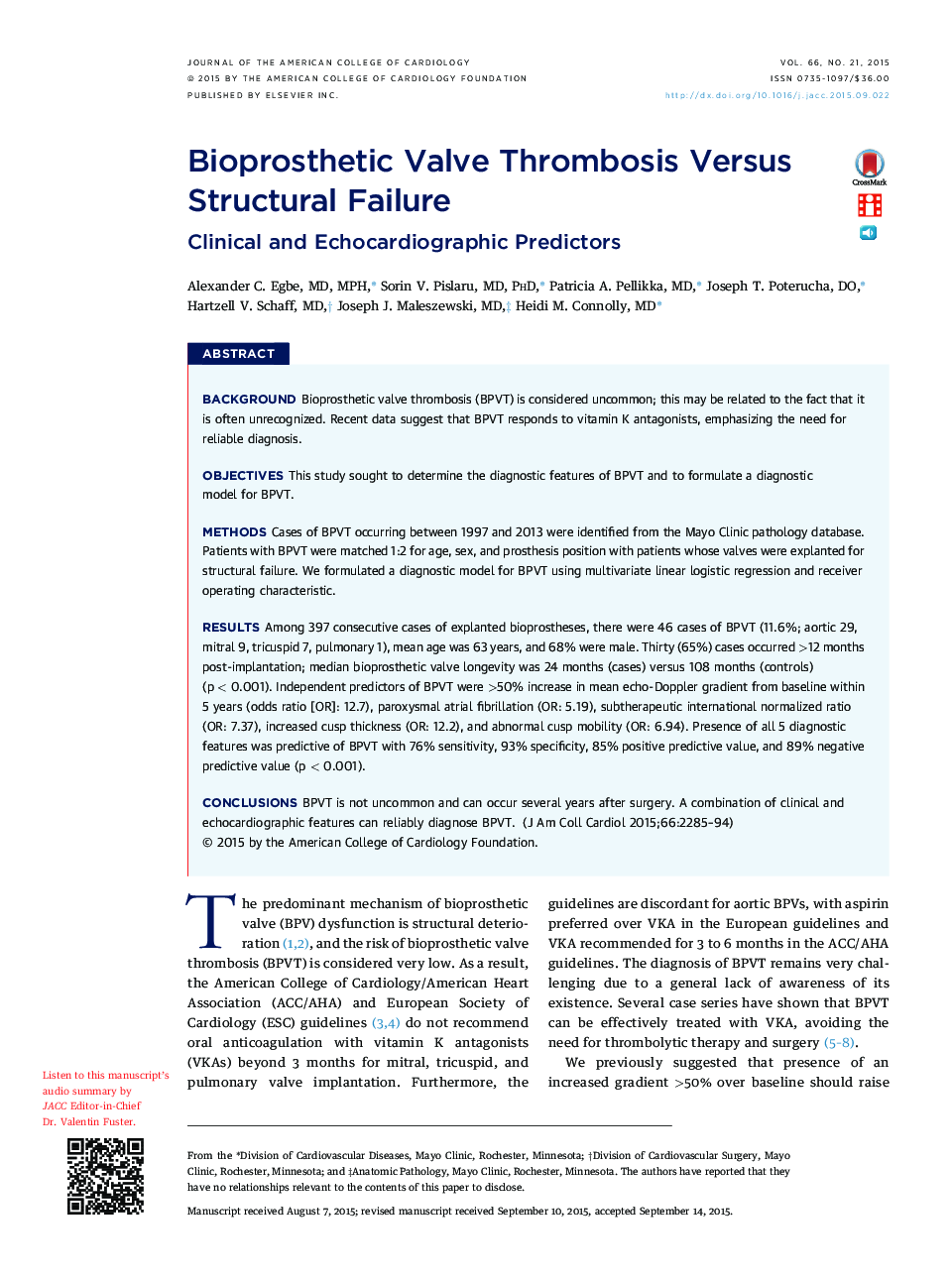| Article ID | Journal | Published Year | Pages | File Type |
|---|---|---|---|---|
| 5982136 | Journal of the American College of Cardiology | 2015 | 10 Pages |
BackgroundBioprosthetic valve thrombosis (BPVT) is considered uncommon; this may be related to the fact that it is often unrecognized. Recent data suggest that BPVT responds to vitamin K antagonists, emphasizing the need for reliable diagnosis.ObjectivesThis study sought to determine the diagnostic features of BPVT and to formulate a diagnostic model for BPVT.MethodsCases of BPVT occurring between 1997 and 2013 were identified from the Mayo Clinic pathology database. Patients with BPVT were matched 1:2 for age, sex, and prosthesis position with patients whose valves were explanted for structural failure. We formulated a diagnostic model for BPVT using multivariate linear logistic regression and receiver operating characteristic.ResultsAmong 397 consecutive cases of explanted bioprostheses, there were 46 cases of BPVT (11.6%; aortic 29, mitral 9, tricuspid 7, pulmonary 1), mean age was 63 years, and 68% were male. Thirty (65%) cases occurred >12 months post-implantation; median bioprosthetic valve longevity was 24 months (cases) versus 108 months (controls) (p < 0.001). Independent predictors of BPVT were >50% increase in mean echo-Doppler gradient from baseline within 5 years (odds ratio [OR]: 12.7), paroxysmal atrial fibrillation (OR: 5.19), subtherapeutic international normalized ratio (OR: 7.37), increased cusp thickness (OR: 12.2), and abnormal cusp mobility (OR: 6.94). Presence of all 5 diagnostic features was predictive of BPVT with 76% sensitivity, 93% specificity, 85% positive predictive value, and 89% negative predictive value (p < 0.001).ConclusionsBPVT is not uncommon and can occur several years after surgery. A combination of clinical and echocardiographic features can reliably diagnose BPVT.
